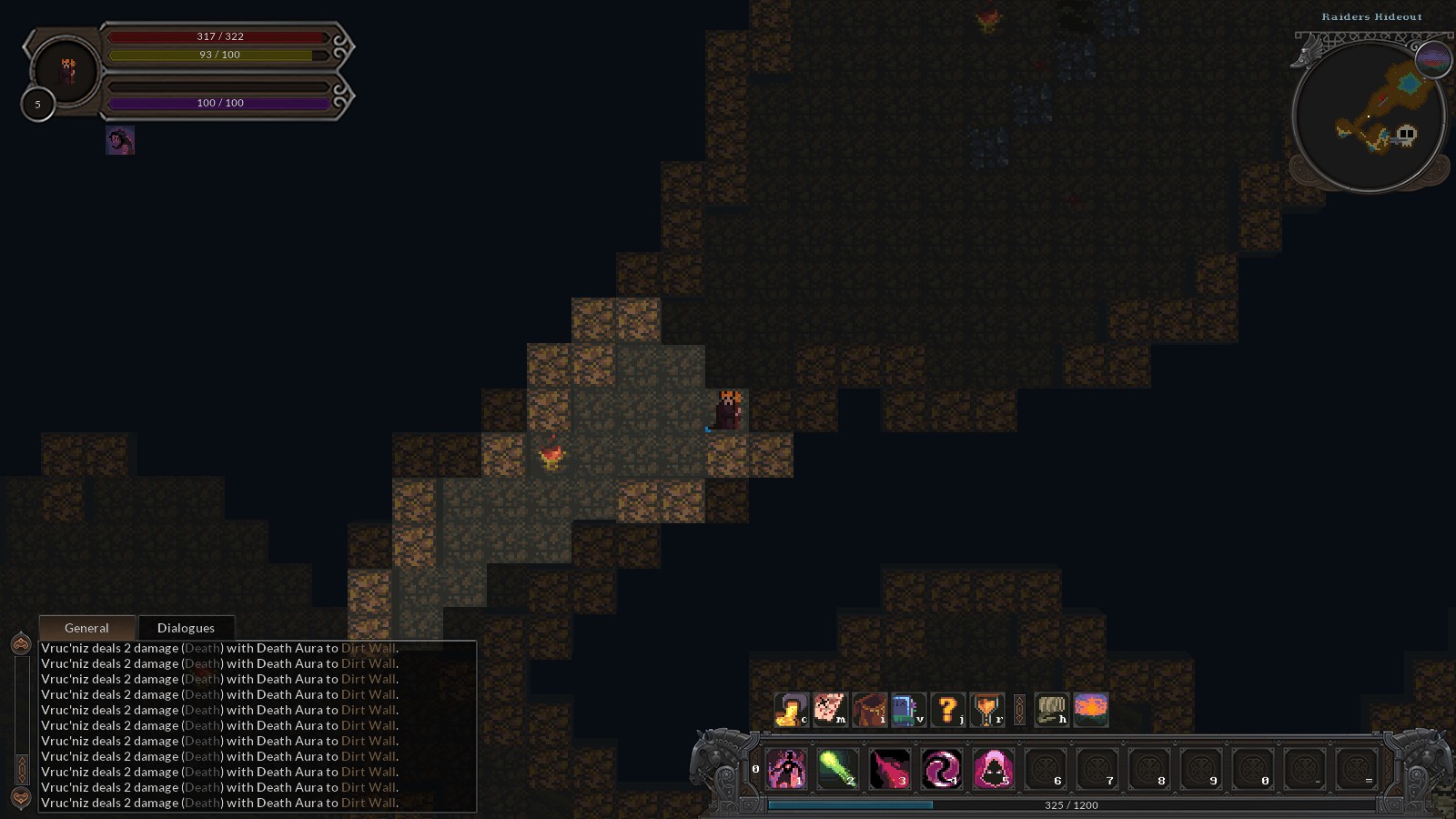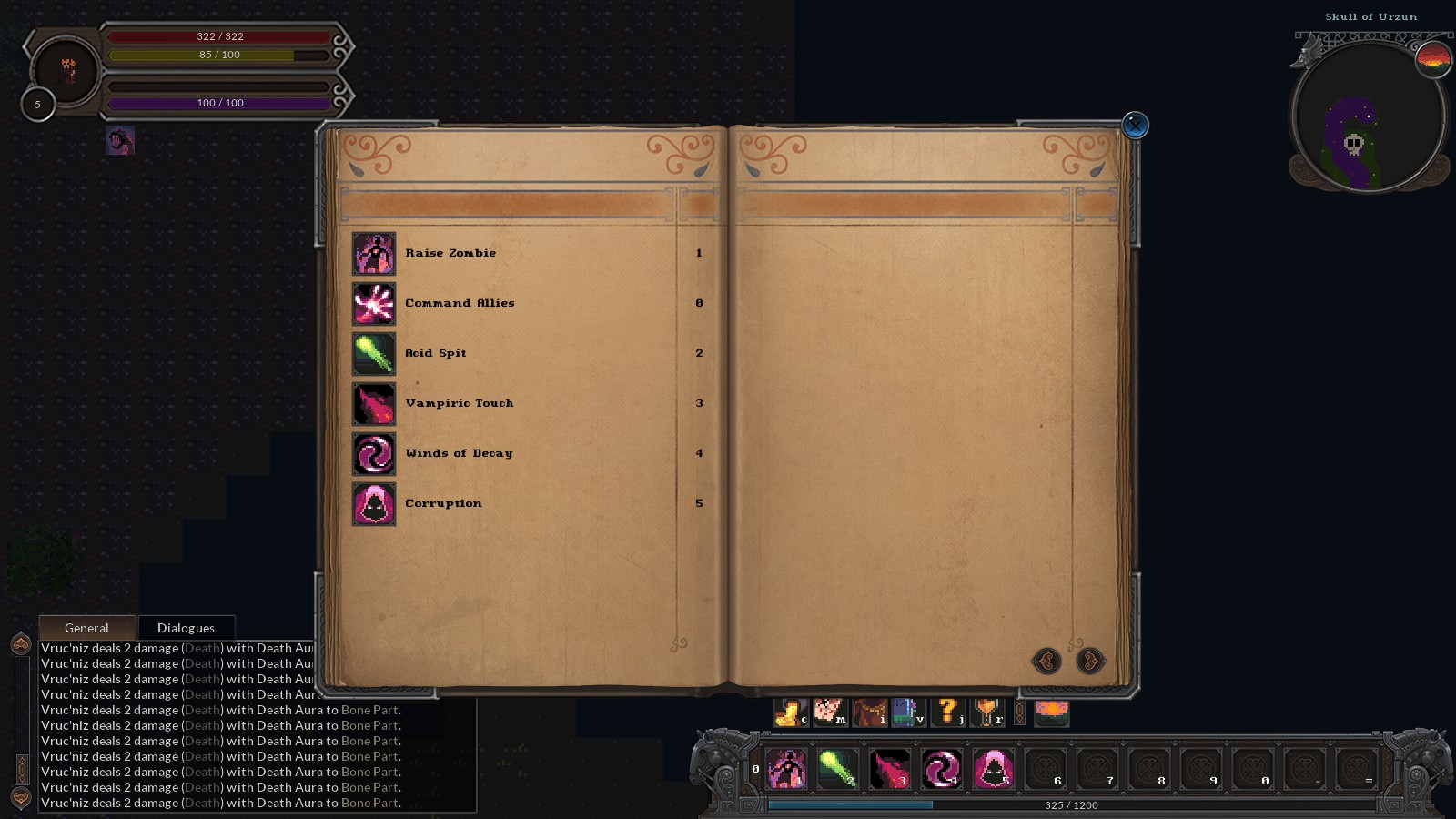Search
[{{{type}}}] {{{reason}}}
{{/data.error.root_cause}}{{{_source.title}}} {{#_source.showPrice}} {{{_source.displayPrice}}} {{/_source.showPrice}}
{{#_source.showLink}} {{/_source.showLink}} {{#_source.showDate}}{{{_source.displayDate}}}
{{/_source.showDate}}{{{_source.description}}}
{{#_source.additionalInfo}}{{#_source.additionalFields}} {{#title}} {{{label}}}: {{{title}}} {{/title}} {{/_source.additionalFields}}
{{/_source.additionalInfo}}- Details
- Category: Computer
- By Daniel Cullen
- Hits: 998
Soulash (PC)

Soulash
Developed By: Artur Smiarowski
Published By: Artur Smiarowski
Released: March 4, 2022
Available On: Microsoft Windows
Genre: Roguelike
ESRB Rating: none specified
Number of Players: Singleplayer
Price: $14.99
Note: This game has a demo available before committing to purchase, it is highly recommended to try it before doing so to get used to the controls and determine if you are interested in the full game. Mods only work on the full game.
I want to thank Artur Smiarowski for graciously providing the review key for this title. They also were kind enough to answer several questions I had about their game as well.
While I was raised on classic game designs where players were expected to make their own maps and this was before the internet made answers widely accessible, I still enjoy modern game design. Regardless, when it comes to "roguelike" games, old school still has its charms, and Soulash is a great example of why.
First, though, let me explain what a "roguelike" is. The term was named after their ancestor, Rogue, released in 1980 for Unix. Since it's been ported all sorts of systems. Games based on the mechanics it pioneered have also been made as a genre. "Roguelike" games typically are randomly generated, top-down dungeons with multiple floors, use a turn-based system for determining combat and progression and have a high difficulty curve where all moves need to be planned carefully. Often, the death of a player character is permanent, so the goal is to stay alive as long as possible while still beating various levels. The original Rogue was rendered entirely in ASCII-based graphics, though later ports and games based on it would use more formal graphical tile assets.
Soulash is a game in the roguelike mold. You start a new game by choosing the race and occupation of the player (from one of several choices for each with their own strengths and weaknesses) and filling out their initial stat sheet from the provided pool of numbers. A Continue option exists for resuming earlier play sessions. If a player dies, the death is recorded in the "Cemetary" located on the title screen explaining how long they lasted in the last play session and what took them down.
The actual meat and potatoes of the gameplay loop is that the player starts on the world map with a limited degree of vision (depending on race/occupation benefits and penalties). They typically start off with almost no equipment and with poor initial stats. Movement can occur in any cardinal and ordinal direction on the map so long as there is nothing in the way to prevent moving, and the enemies will react to the player's position relative to theirs. Equipment can be found as random treasure, on enemies, or, as in Soulash, some can be crafted with various materials at certain stations.

Strong Points: Interesting twist on the roguelike genre; good music; highly extensible via modding with Steam Workshop support
Weak Points: Rather difficult early game depending on player builds with high learning curve; controls take some getting used to; rare crashes
Moral Warnings: RPG-style violence with depictions of blood and corpses; profound presence of undead, necromancy and demonic creatures, some of which you can play as; must play a villain character by default
The story is pretty simple. Regardless of whatever race or occupation you picked, you are the villain in the eyes of the world, and thus everything in the Soulash world will be wanting you dead. The goal is, in short, survival for as long as possible. Given the original Rogue also had a soup-thin plot where the real gameplay was in the ordeal to survive as foes get harder and harder, this basic premise is all it really needs. Given how randomized the game world is each time you play, no two play sessions will ever be identical.
Gameplay for your characters can vary wildly. Depending on your initial choices, you can start off having a hard or relatively easy time. Ranged attacks will initially be better than melee for most builds, and since equipment can break after sustained usage, finding good equipment and learning the means to repair them is key. There are also survival elements for most races like hunger, thirst, and fatigue that need to be monitored. Some of the more esoteric races (like the Vampire) instead have a blood meter, trolls can eat their fallen foes to regain energy, and the Lich consumes soul energy while deriving no benefit from food. Skills can be the difference between life and death, so starting with a good skill set and picking new skills wisely can be the difference between dying early or powering through the late game. Finally, depending on your build, you could be able to see well in daytime or nighttime, and these limitations can make you vulnerable to ambush since your range of vision is limited making it easy to get ganged up on upon at certain periods.
Like many roguelikes, the farther you go from the starting point, the harder it gets. While the difficulty curve isn't too steep early on, it can get harsh later, and the game does expect you to have mastered the mechanics of play. This is NOT a game to hold your hand for the most part, it's a deliberate throwback to the roguelikes of old.
Graphically, this game utilizes a hand-drawn pixel-style format, much like classic roguelikes. It's shown from a top-down perspective, though has an interesting form of pseudo-3D where certain objects like trees or other tall things appear to have a 3D look from certain angles to indicate how they block your vision or progress. The map, per roguelike tradition, is randomized depending on your initial choices, so a lot of replay value comes from no two play sessions per build being the exact same. Another fun element is that almost all parts of the map can be destroyed or taken apart in some manner. For resources you may need for crafting this is worth keeping in mind. The game tiles can be really small at high resolutions, so the player may also want to increase the tile size in the options menu to show them in larger detail.
The music and sounds take heavy notes from dark fantasy. Lots of flutes, some brass instruments, and drums make for a lot of ominous or ambient tracks that go hand in glove with the gritty atmosphere of the world. The sound effects are crisp and have a rough sound that makes them all distinct to the ear. Being a roguelike, this has no voice acting or anything fancy, but it's more than enough to set the mood and is quite pleasant to the ear.

Higher is better
(10/10 is perfect)
Game Score - 82%
Gameplay - 15/20
Graphics - 8/10
Sound - 9/10
Stability - 4/5
Controls - 5/5
Morality Score - 58%
Violence - 2/10
Language - 10/10
Sexual Content - 10/10
Occult/Supernatural - 0/10
Cultural/Moral/Ethical - 7/10
The control scheme requires the use of a mouse and keyboard and comes in two formats. The "by sight" format moves the character in the direction the character is looking, indicated by a blue arrow. This scheme uses a WASD-style direction move system. The "directional" system uses the movement system keyed to the number pad on the side of the keyboard where movement is determined by which directional key you press. Of the two systems, I prefer the former personally. It may take a bit to get used to either way, so I'd practice to get the hang of it. The game has a clickable content menu, but on a keyboard, it may be quicker to memorize the keys that correspond to certain actions. There are in-game tutorials provided and the controls can be quickly referenced at any time as well.
This is generally a stable game. I had maybe one crash I was unable to repeat, and I was provided an immediate crash report I could make when it happened. Otherwise, this game will run well on Windows. It can run in Linux quite well via Steam Proton and is rated Playable on the Steam Deck. On the latter, I recommend setting a large tile size and possibly configuring the controls of the Deck to best suit your playstyle if you intend to play on both PC and the Deck at different intervals.
This game also supports modding tools with Steam Workshop access. There is a modding tool explanation in the "docs" folder of the game installation which is illustrated and explained in patient detail. While the actual source of the game is closed and written in C++, the modding tools provided do allow for a great deal of extension, including custom edits to all existing game data as well as adding new concepts or features. Mods may also affect game stability and will disable Steam Achievements.
Morally, there are some concerns.
Violence is going to be crude if rather graphic. While rendered in pixel graphic format and generally shown through text messages, you are clearly having to kill humanoids, animals, and other beings using a variety of weapons and magic. Bodies are left behind that can be revived via necromancy, drained of blood by those that subsist on that, or eaten by certain races. All violence is generally in self-defense since all NPCs will attack you on sight. That noted, you are playing as an inherent "villain", hence why you are attacked on sight.
The language is fairly clean and there is no actual depiction of sexual content. There is a very strong presence of necromancy, the undead in general, and demonic beings. This game is set in a bleak medieval dark fantasy setting where the supernatural is on frequent display, including various usable altars to several generic deities.
Morally, you are forced to play a villain of some sort so everything you encounter is going to be inherently hostile. This will require you to kill to survive, especially if you play the Troll (who eats other humanoids), Vampire (who must drain blood from others), or Lich/Dark Elf (who drains souls).
Overall, Soulash is a brutal, gritty, and fun throwback to the roguelike genre. Technically, it's pretty sound although the difficulty is rather high by default. Morally, it's got some concerning subject matter I would not recommend to any save an older teen on up. It does go on sale with its sequel often, and I certainly recommend this if you have a roguelike itch and don't mind the high challenge, it will scratch that itch.








